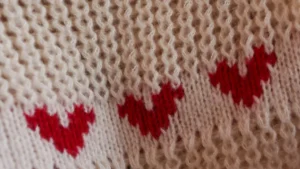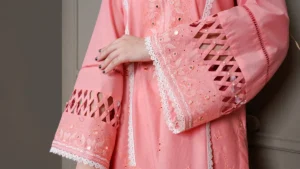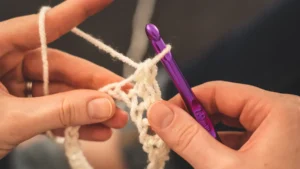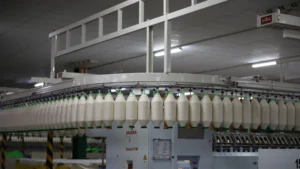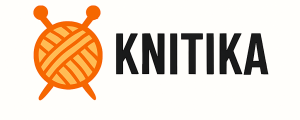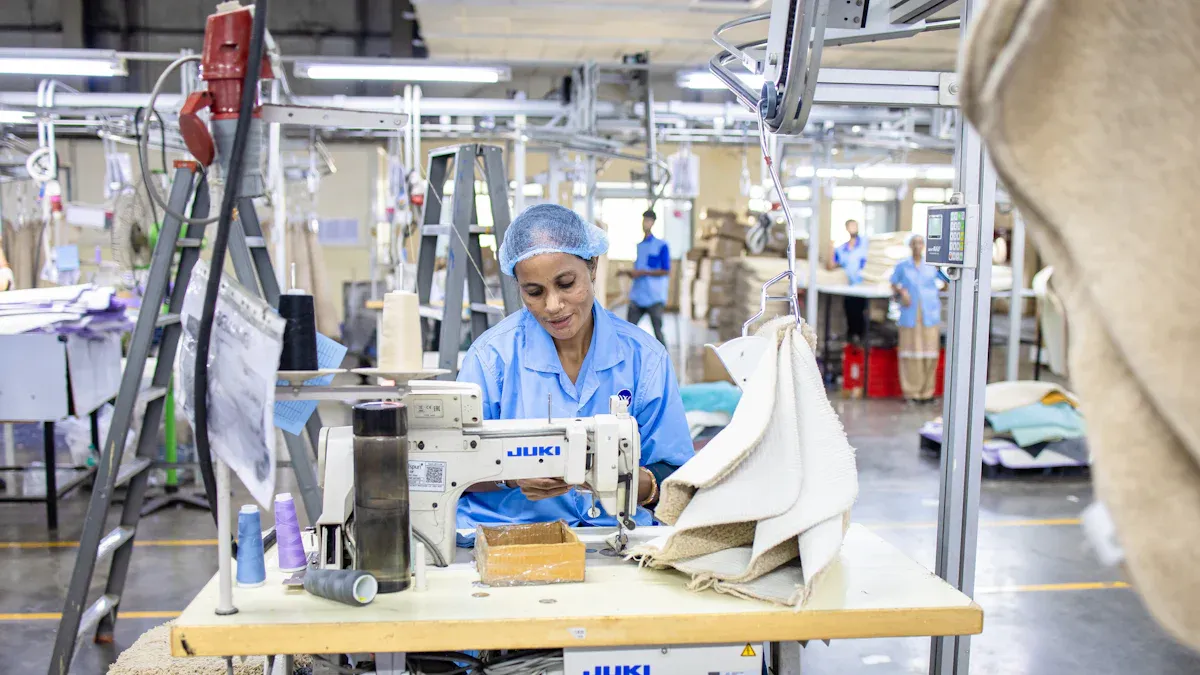
Modern knitwear factories use new technology and skilled workers. They also have strong quality checks to make good clothes.
Smart knitting machines watch the process in real time. This helps cut waste and keeps fabric the same.
Skilled workers look for mistakes and fix machines. This keeps everything working well.
Automated systems check yarn quality and the air. This helps make sure all products are the same.
Metric | Result | Benefit for Dresses |
|---|---|---|
Compression Strength | Like foam bra cups | Strong and gives support |
Air Resistance | Better airflow and more comfort | |
Nipple Displacement | Lowered by 9% | More steady and comfortable |
Factories that use green and fully fashioned ways make better knitted dress and knit maxi dress styles. These dresses last longer, feel better, and look nice. This is what a Factory-Level Guide wants.
Key Takeaways
Picking strong, soft, and eco-friendly yarns like organic cotton helps make dresses that last long and feel nice. These dresses also match what more people want to buy.
Using smart design tools and seamless knitting technology makes dresses fit better. This also means less waste and faster work.
Modern knitting machines and skilled workers help make good fabric. They also lower mistakes and keep work fast.
Careful panel joining and strong seams help dresses last longer. They also make the dresses feel comfy and better in quality.
Checking quality often during making and at the end keeps defects low. This makes sure every dress is what buyers want.
Factory-Level Guide: Key Production Steps
Material Selection
Choosing the right material is the first step for every high-quality knitted dress and knit maxi dress. Factories start by picking yarns that are strong, soft, and good for the planet. The Preferred Fiber & Materials Market Report 2024 says more people now want natural fibers like cotton, hemp, and flax. Cotton is now used more, going from 24% to 30% in one year. This means buyers and brands care more about using eco-friendly and renewable materials.
Tip: Factories often need certifications like GOTS or OEKO-TEX. These show the yarns are safe for the environment and made the right way.
The use of natural fibers is growing by 4.3% each year.
Governments make rules to help factories use better materials and create less waste.
Brands now buy organic cotton and fibers that break down naturally to meet what shoppers want.
Certifications and rules help factories keep quality high and track where materials come from.
Aspect | Evidence Supporting Importance of High-Quality Natural/Sustainable Fibers |
|---|---|
Market Growth | The Natural Fiber Market was worth USD 48.75 billion in 2022. It could reach USD 74.99 billion by 2030. This is because people want more sustainable materials. |
Consumer Demand | More people want eco-friendly, biodegradable, and renewable fibers. They care about the environment. |
Regulatory Framework | Governments have stricter rules and standards, like the Global Organic Textile Standard (GOTS). These make sure materials are safe and made the right way. |
Material Qualities | Natural fibers are strong, let air through, break down easily, and can be replaced. This makes them a better choice for green products. |
Certifications | GOTS certification checks for good environmental and social practices. This helps make sure fiber choices are high quality. |
A Factory-Level Guide always checks suppliers carefully. Factories look for steady quality, good fibers, and if they follow green rules. This careful picking makes sure every knitted dress and knit maxi dress is good for the market and the planet.
Design Development
Design development decides how each piece will look, fit, and work. Factories use smart tools and creative teams to turn ideas into real designs. 3D modeling and computer programs help a lot now. These tools make design faster, save fabric, and let factories make special changes. Seamless knitting technology, like WHOLEGARMENT®, lets factories make dresses in one piece. This means fewer seams, more comfort, and less waste.
3D modeling lets designers see and change patterns fast.
Seamless knitting makes clothes with fewer seams, so they fit better and last longer.
Pattern engineering uses body data to make sure clothes fit all sizes well.
User-centered design uses feedback from real people to make clothes more comfy.
Digital tools help teams share ideas and make changes quickly.
A Factory-Level Guide always has quality checks at this stage. Factories test for size, washing, and strength to make sure every design is great. These steps help factories make knitted dresses and knit maxi dresses that look nice and last a long time.
Knitting Process
The knitting process turns yarn into fabric pieces or whole clothes. Modern factories use new knitting machines with automation and real-time checks. These machines work faster and make fewer mistakes. Skilled workers set up the machines, watch the work, and fix things if needed.
Note: Automation and data tools help stop mistakes and keep things the same.
New knitting machines with automation make more clothes and do it better.
Keeping machines in good shape stops them from breaking down.
Skilled workers help lower mistakes and waste by setting machines right.
Automation in moving and packing materials makes things faster and cheaper.
Data tools watch how things are going and show what can be better.
Tests show that using green fiber mixes, like hemp and acrylic, with new knitting ways makes clothes better. These fabrics stay comfy and strong, even after many washes. Factories that follow a Factory-Level Guide use fully fashioned ways to shape pieces right on the machine. This cuts waste and makes clothes fit better.
A knitting company in Brazil showed that following each step, like setup, making batches, and checking with machines, makes better clothes and more of them. The “Knitting 4.0” plan uses machines for the whole line, so people do less and results stay the same.
A Factory-Level Guide for knitting always uses smart machines, skilled workers, and strong controls. This way, factories make knitted dresses and knit maxi dresses that are strong, comfy, and stylish.
Assembly and Construction
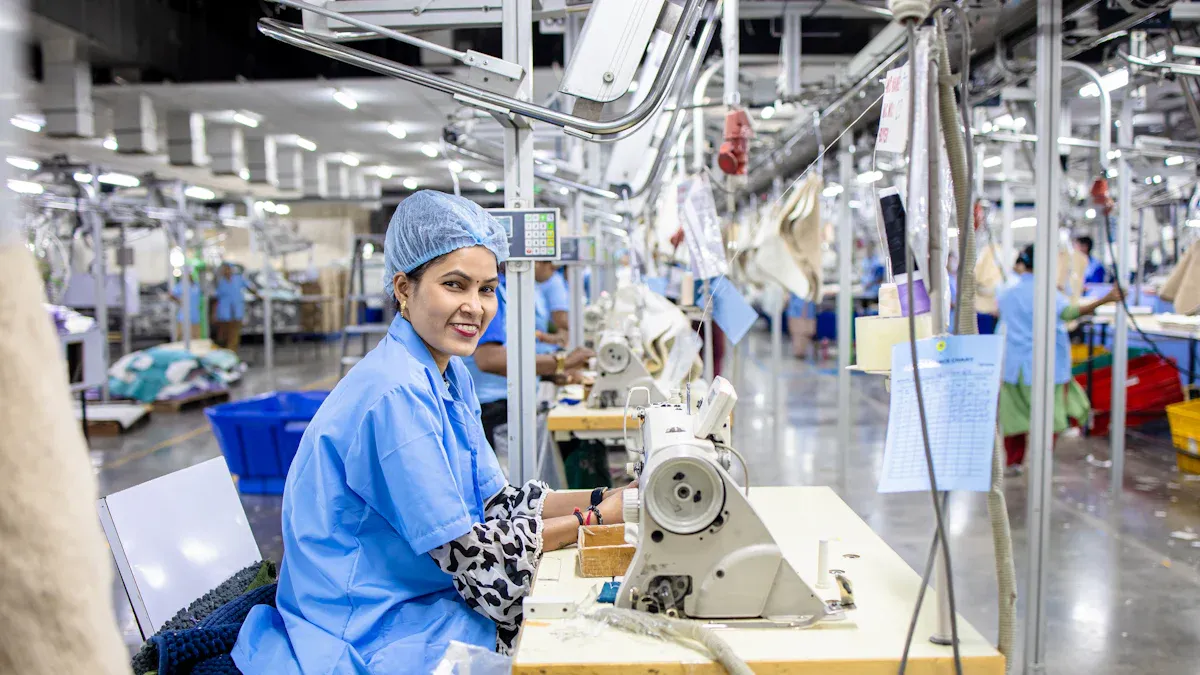
Panel Joining
Factories join panels to create the final shape of a knitted dress or knit maxi dress. Skilled workers or automated machines align each panel with care. They use special linking machines or flatlock machines for this step. These machines help keep the seams flat and smooth, which adds comfort and style.
Workers check that each panel matches the pattern.
Machines stitch panels together with even tension.
Teams inspect the joined panels for gaps or misalignment.
Tip: Flat seams feel softer against the skin and help dresses keep their shape after many washes.
Factories often use fully fashioned knitting. This method shapes each panel on the machine, so less cutting and sewing is needed. It reduces waste and makes the garment fit better. When panels fit together well, the dress looks neat and feels comfortable.
Seam Strength
Seam strength plays a key role in how long a knitted dress or knit maxi dress lasts. Factories test seams by pulling and stretching them to see if they hold up. The choice of fabric, thread, and stitch type all affect seam strength.
A study on different knitted fabrics found that polyester/cotton blends have higher seam strength than pure cotton or cotton/lycra. Seam strength drops when the seam angle or needle size increases. The right needle type can make seams stronger. Factories must pick the best sewing settings for each fabric to keep seams from breaking.
Another experiment showed that increasing stitch density (stitches per inch) makes seams stronger. Lower stitch density weakens the seam. Factories use this knowledge to set machines for the best results.
A case study also found that plain fabrics with more binding points give better seam efficiency. Factories choose thread and stitch types based on fabric structure. This careful selection helps dresses stay strong during wear and washing.
Strong seams mean dresses last longer and keep their shape, even with daily use. Factories that focus on seam strength deliver better quality to buyers.
Quality Control
In-Line Inspection
Factories use in-line inspection to find problems early. Skilled inspectors check each step, like knitting and sewing. They look for things like uneven stitches or weak seams. They also check for color differences. This helps fix mistakes before they get worse.
Factories use Acceptable Quality Limit (AQL) rules to keep defects low.
Inspectors test yarns and materials for pilling and color.
They also check fabric strength.
Teams look at size sets and patterns to make sure dresses fit.
They check sewing to see if each dress looks right.
Factories use ISO 9001 systems to keep work smooth and cut waste.
Digital tools like tech packs help teams track quality.
Cloud ERP systems let teams watch quality in real time.
Regular in-line inspections help factories find and fix problems fast. This keeps knitted dresses and knit maxi dresses high quality and the same every time.
Final Inspection
Final inspection is the last check before shipping. Inspectors look at finished clothes to see if they meet all standards. They check sizes, look for defects, and make sure labels and packaging are right.
Factories use sampling methods like AQL and ISO 2859 to pick how many pieces to check.
Inspectors measure clothes and check how well they are made.
They test zippers and buttons.
Teams look for visual defects and test if colors stay the same.
They also check if labels are correct.
Final inspections can lower defect rates by 15-40%.
This makes products more reliable and customers happier.
Technology and training help make final checks better.
Final inspection makes sure every knitted dress and knit maxi dress meets design needs and what buyers want. This step keeps the brand strong and customers pleased.
Finishing and Packaging
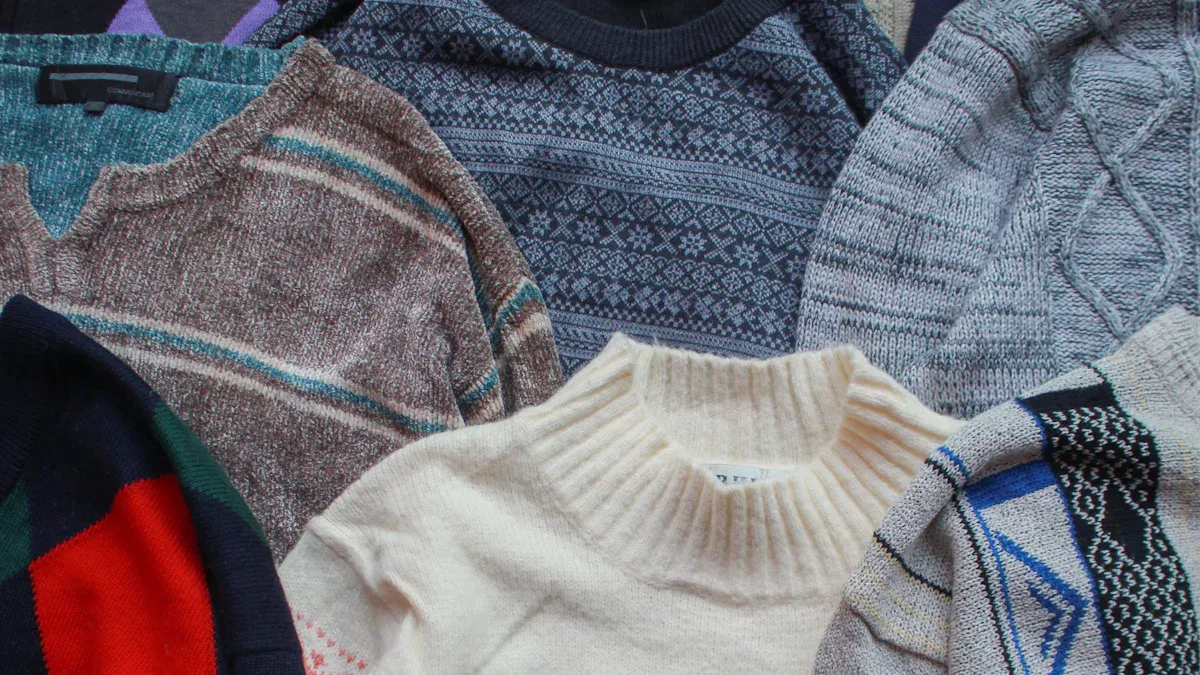
Washing and Pressing
Factories wash and press each knitted dress and knit maxi dress with care. These steps make the fabric smooth and soft. Washing removes loose fibers and helps set the shape. Workers use special machines with gentle cycles. They watch the water temperature and use mild soap to keep the fabric safe.
Pressing uses steam and heat to get rid of wrinkles. It also helps the dress keep its shape and look new for longer. Some factories add chemicals to stop wrinkles and make the dress last longer. Wool dresses get extra steam and heat to set creases and help the fabric bounce back.
Tip: Good washing and pressing make dresses softer, stronger, and easier to care for.
Studies show these steps help dresses look better and last longer. The table below shows how finishing helps knitwear:
Performance Aspect | Knitwear Fabrics |
|---|---|
Primary Benefit | Extra soft handle |
Dimensional Stability | High dimensional stability |
Elasticity and Resilience | Elasticity and resilience |
Fabric Handle | Very good sewability |
Abrasion and Tear Strength | Tear strength |
Additional Properties | Hydrophilicity and high whiteness |
These finishing steps help every knitted dress and knit maxi dress stay comfy, strong, and nice to wear.
Packaging Methods
Packaging keeps each dress safe during shipping and storage. Factories use different ways to protect the dresses. Workers fold each dress neatly to stop creases. They use tissue paper or bags to keep out dust and rubbing. Some factories use green packaging, like recycled boxes or bags that break down.
Each dress gets a size label and care tag.
Teams seal packages to keep out water and dirt.
For big orders, workers use strong boxes and padding to stop movement.
Good packaging keeps knitted dresses and knit maxi dresses looking new and ready to sell. Using the right methods also means fewer returns and happier customers.
Technology and Skilled Labor
Advanced Machinery
Modern knitwear factories use advanced machines to make high-quality knitted dresses and knit maxi dresses. These machines have new technology like IoT sensors and ERP systems. The sensors watch every step as the clothes are made. AutoML helps guess fabric quality and stops machines from breaking down. Factories use cloud computing and big data to plan and check quality.
IoT sensors watch how machines work and find problems fast.
ERP systems help keep track of orders and supplies.
AutoML guesses if fabric is good, so repairs cost less and work is faster.
Automation in weaving stops threads from breaking and makes machines faster.
Watching machines all the time helps them last longer and makes better fabric.
Factories using these tools have machines that work more, ship faster, and make customers happier. They can make special, high-quality knitwear for less money.
Old textile factories tried to work fast but had more mistakes. Now, using smart engineering and new machines helps factories work fast, make good clothes, and save money. This helps them stay ahead and make a profit.
Craftsmanship
Even though machines do a lot, skilled workers are still very important. Technicians set up machines, change settings, and check each step. They can see small mistakes that machines might not find. Their skills make sure every knitted dress and knit maxi dress is made well.
Technicians line up panels and check if seams are strong.
Workers look at fabric to see if stitches and colors match.
Teams check if finished clothes fit and feel good.
Skilled workers add care to every dress. Their careful work helps factories make dresses that look nice, feel soft, and last a long time.
When factories use both smart machines and skilled people, they get the best results. These factories make knitted dresses and knit maxi dresses that are better than others.
Sustainability in Production
Eco-Friendly Materials
Factories pick eco-friendly materials for knitted dresses and knit maxi dresses. These include organic cotton, recycled polyester, and sustainable wool. These materials use fewer bad chemicals and help the environment. Many factories use Life Cycle Assessment (LCA) tools. These tools track pollution and show where to save energy and resources.
Sustainability reports from top companies say eco-friendly materials help both products and nature. Brands like Patagonia and L’Envers use recycled and natural fibers. This means less energy is used and fewer chemicals are needed. Sustainable wool can be used again and breaks down in nature. This helps the earth and makes dresses last longer.
Factories using eco-friendly materials often do better than others. They also meet the needs of buyers who want green products.
A table below lists some good things about eco-friendly materials in knitwear:
Material Type | Key Benefit | Environmental Impact |
|---|---|---|
Organic Cotton | Soft, strong, safe | Lower water, fewer chemicals |
Recycled Polyester | Durable, energy-saving | Reduces waste, saves energy |
Sustainable Wool | Warm, renewable, long-lasting | Biodegradable, low carbon |
Waste Reduction
Factories try hard to make less waste when making knitted dresses and knit maxi dresses. They use smart machines to cut fabric with less leftover. Many factories recycle scraps and use them in new things. Some use water recycling and safe dye methods to save water and energy.
Factories watch how much energy they use and upgrade machines.
They use recycled packaging to use less plastic.
Teams sort and recycle fabric scraps to keep them out of trash dumps.
Many factories turn old clothes into new yarn to help the earth.
Studies show that factories with good waste plans get real results. They lower pollution, save money, and follow tough rules for the environment. LEED-certified factories clean water better and meet high standards for waste and pollution.
By cutting waste, factories use resources better and help the planet. This also means higher quality and more eco-friendly knitted dresses and knit maxi dresses.
Market Trends
Style Preferences
The knitwear market is always changing. People want new looks and features in every knitted dress and knit maxi dress. Shoppers do not just want to stay warm anymore. They want clothes that feel good and can be worn many ways. Many people like athleisure and casual wear now. Brands make soft, stretchy fabrics for lots of events. Buyers also care about the planet. They want things like organic cotton and recycled fibers. Factories use 3D knitting and seamless ways to make special clothes. These methods help make each dress unique and easy to change.
Brands change their styles often to match what is popular. This helps keep knitwear fun and interesting.
The table below shows how what people like changes how factories work:
Aspect | Trend Details |
|---|---|
Market Size | |
CAGR | 5% growth from 2019–2024, expected to continue through 2033 |
Style Drivers | Sustainability, personalization, athleisure |
Production Techniques | Organic cotton, recycled materials, 3D knitting, tech-infused fabrics |
Market Segments | Fast fashion (largest), luxury (profitable), athleisure (growing) |
Material Usage | More sustainable fibers |
Regional Growth | North America, Europe (major markets); Asia-Pacific (strong growth) |
Technology Integration | Digital design, e-commerce, faster trend response |
Buyer Expectations
Buyers want every knitted dress and knit maxi dress to be high quality, stylish, and good for the earth. They want clothes that are soft, fit well, and last a long time. Comfort and being able to wear clothes in many ways are very important. This is true as more people work at home or care about health. Buyers also want cool designs that work for all seasons and events.
Caring for the planet is now very important. Many shoppers pick clothes made from things that break down or are made the right way. They like organic cotton, wool, bamboo, and hemp. Top brands use eco-friendly yarns and help with programs that reuse clothes. In North America and Europe, people really want safe and fair ways to make clothes.
Buyers want:
Knitwear that is comfy, casual, and can be used for many things
Styles that look good and have texture and stretch
Materials that are good for the earth and can be traced
To know where and how things are made
Factories that do these things earn trust from buyers around the world. They also do better in a market that changes quickly.
Each step in the Factory-Level Guide helps make a better dress. Skilled workers and smart machines work as a team. This makes dresses comfy, strong, and stylish. Using green choices helps the earth and gives buyers what they want. A new survey looked at 23 knitting factories. It showed that spending money on new ideas and quality brings more sales and better teams. Factories need to keep getting better to stay ahead.
FAQ
What makes a factory-produced knitted dress higher quality than mass-market options?
Factories use new machines and skilled workers for each step. They check yarn quality, stitch density, and seam strength. This helps dresses last longer, fit better, and feel softer than most mass-market ones.
How do factories ensure knit maxi dresses keep their shape after washing?
Factories test every dress to see if it keeps its shape. They use special washing and pressing steps. Good yarns and tight stitching help dresses stay the same, even after many washes.
Which materials work best for sustainable knitted dresses?
Material | Benefit |
|---|---|
Organic Cotton | Soft, eco-friendly |
Recycled Polyester | Durable, less waste |
Sustainable Wool | Warm, biodegradable |
Factories pick these materials to help the planet and meet what buyers want.
Why do buyers prefer fully fashioned knitwear?
Fully fashioned knitwear is made by machines that shape each part. This way, there is less waste and a better fit. Buyers get dresses that look neat, feel comfy, and last longer.
Can factories customize knitted dress designs for brands?
Factories can make custom sizes, colors, and patterns. Their design teams work with brands to make special styles. Fast samples and new machines help brands start new collections quickly.





